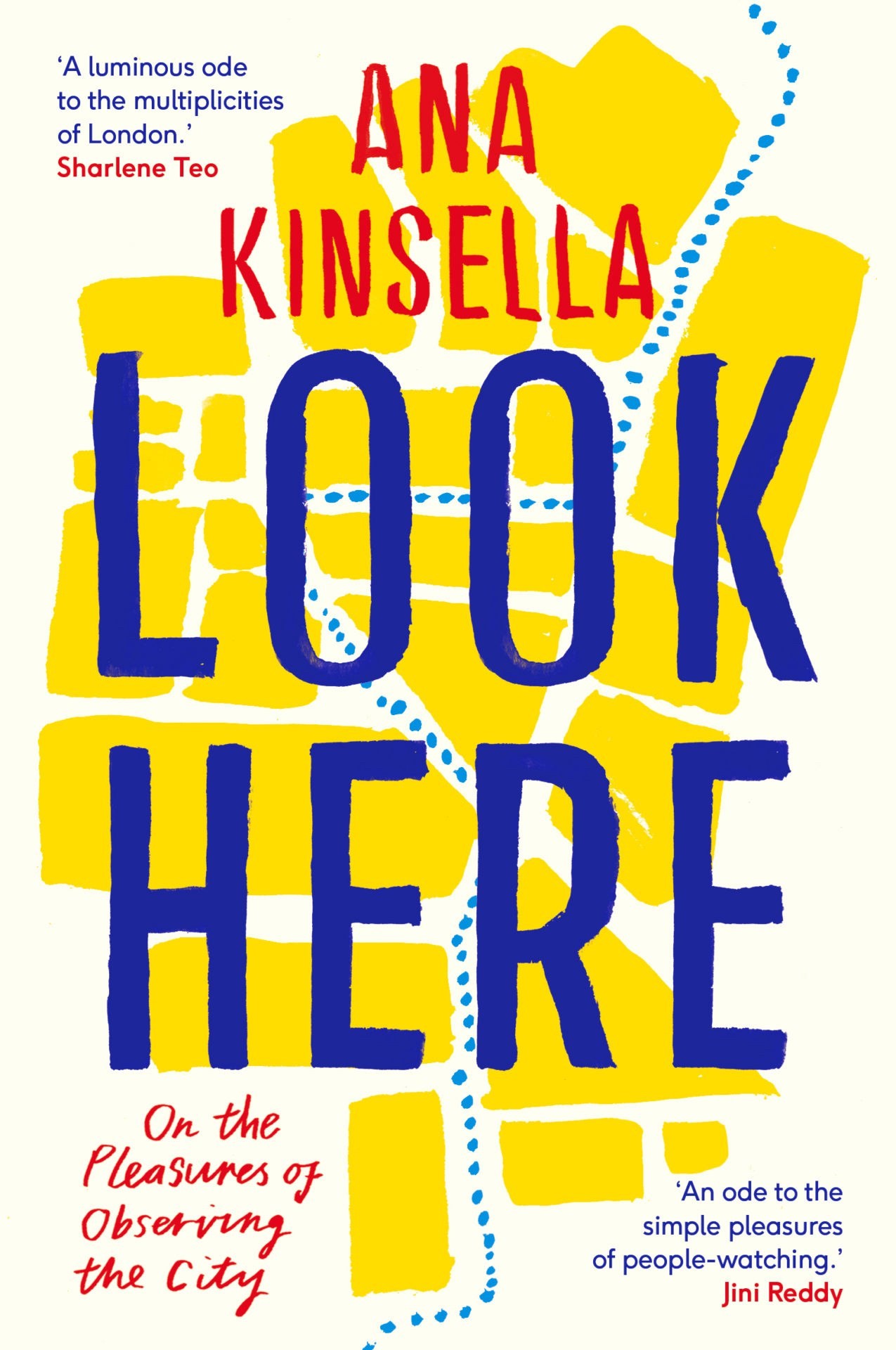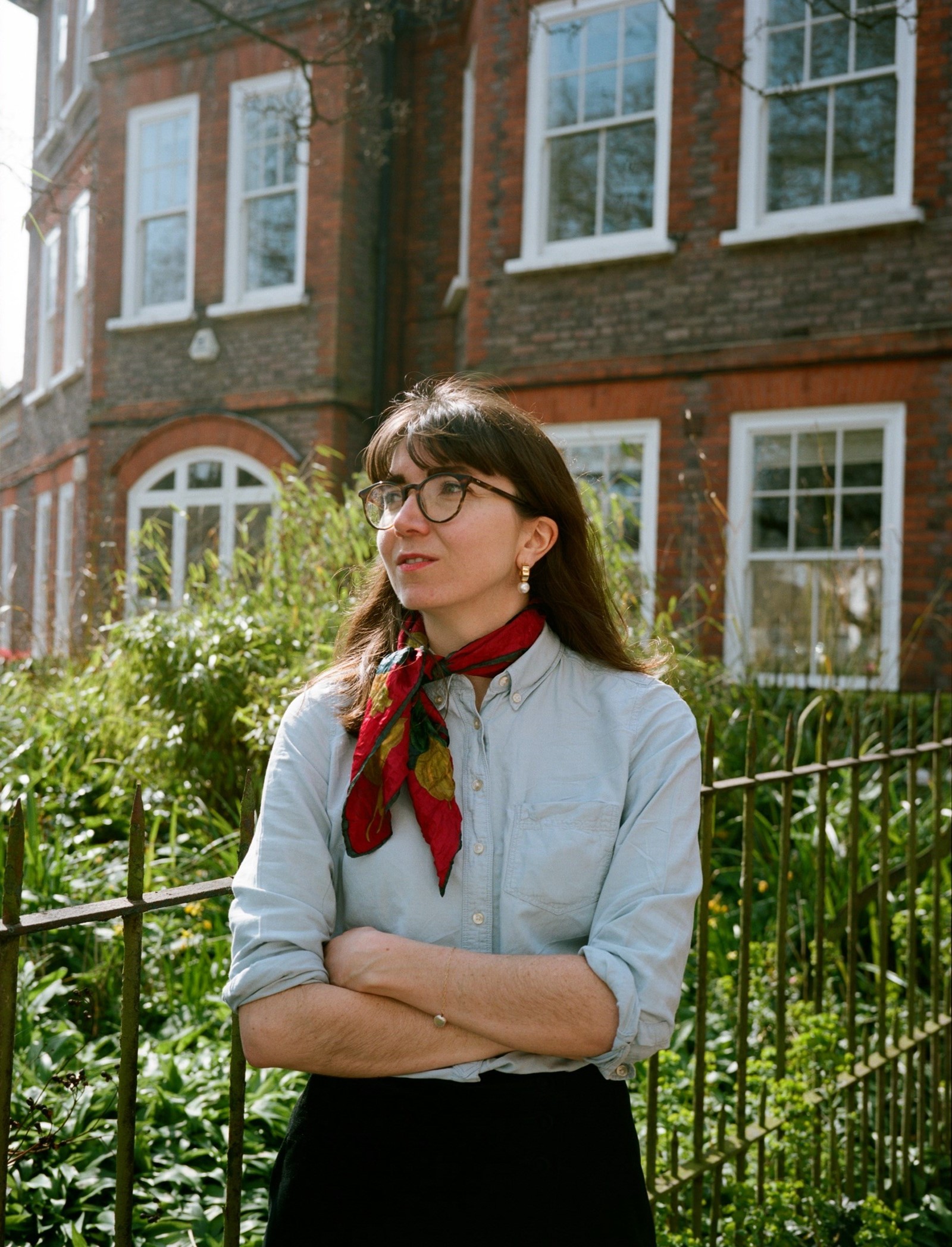It’s a strange phenomenon that book blurbs often bear little resemblance to the book they are describing, but I can’t imagine a better description for Ana Kinsella’s debut Look Here than its blurb: “a gorgeous, layered portrait of a city and its people, a book that urges us to slow down, look closer and find beauty.” A beautifully nuanced consideration of London that doubles as an argument for the joy of city life, it’s a book that manages to give fresh insight on the intimate connections we develop with the cities we inhabit.
Kinsella grew up in Dublin and moved to London in her early twenties to study an MA in fashion journalism at Central Saint Martins; she then began a career initially writing for, then editing fashion magazines, with a stint spent interning in New York too. Her thoughtful, clear-eyed perspective, which from the outset tended to focus on style and clothes over fashion, drew a loyal following, in particular for her newsletter, The London Review of Looks. With dispatches on city life that used style as a jumping-off point, this newsletter was perhaps a kind of early iteration of Look Here.
Subtitled On the Pleasures of Observing the City, as much as Look Here is an observation of London it is also one of Kinsella herself. The book is perceptive on how priorities can shift and change over early adulthood, and Kinsella is particularly deft at weaving connections between her personal experience and cities. “There was nothing more honest to me than getting up in the morning and putting on something I loved to wear. To sully that process with commerce, money, profit, it felt like tearing down a beloved old historic building to put up a block of luxury flats in its place,” she writes. “Despite the fact that this was the industry I now worked in – that in a way I had been striving for all along – I found it alienating, boring … I turned back to the streets instead, and to my own body, my own dressed self. I looked at the city and, in this way, I found a way of looking at myself.”

Holly Connolly: The structure of Look Here is really clever in that it kind of emulates city life itself; it’s divided into physical places and interspersed with seasonal reflections, so you capture movement in time and place. How did this structure emerge?
Ana Kinsella: It’s something I considered quite a lot when I was thinking about what form the book should take. This was all in the first lockdown summer when I just wasn’t moving around the city in the way I was used to, and I was thinking a lot about that movement. A lot of the books I had been reading, that really inspired me for this book, were about travelling around different cities in different ways, and I was really interested in how you could get that sense of movement, and almost kind of repetition, into text. Especially in a city, you often go to the same places over and over again, you make the same type of journey, so I wanted that cyclical nature to come through.
When I was first thinking about it I mentally divided the writing into two different kinds of chapters. So the chapters that are about a specific place were more like my newsletter, which tends to use a single observation as a gateway to other things. And then the walking sections would be longer and a bit more digressive, delving into a topic rather than a place or a person. In the actual process of writing it those boundaries blurred a little bit, and I think that’s probably also quite similar to city life as well, things just blur into each other.
HC: How difficult was it writing a book about city life in the midst of lockdowns?
AK: I wrote the proposal for the book in that first lockdown summer, and I didn’t want it to be all about lockdown, but the lockdowns ended up lasting almost the entire period I was writing the book, in some form or another. It’s really interesting to think that it could have been a very, very different book, and I was slightly concerned that the lockdown presence in the book will date it. But I also think that you can’t avoid that, it’s a product of the time in which it was written.
HC: I remember there were a lot of quite frenzied, almost manic ‘lockdown diaries’ published online early on in the pandemic. I appreciated Look Here because it felt quite removed, and considered. I think it’s valuable as a record, that was written during the lockdowns, that lacks the hysteria of early pandemic writing.
AK: The lockdowns were a completely unique thing in the history of city life. I think people were very aware of that at the time, but we’ve already kind of forgotten about it, because it’s so easy to go back to normal life once you’re able to, and to forget. I also think that the lockdowns didn’t change how I viewed cities, but they kind of intensified my feelings on them. And it’s quite a powerful thing, to have these empty streets for so long, and to have people at home or having left the city. It’s a completely different way of living in the city.
“Nothing interesting enough – to merit a memoir – has ever happened to me. I would be the first to say that” – Ana Kinsella
HC: There was a line in the book from your interview with the photographer Jermaine Francis that really stood out to me. He said: “That’s the thing about space that I was trying to investigate: that I’m a photographer, I’m observing people, and then suddenly I become the observed, too.” I felt that this could apply to your own book too, that it’s ‘on the pleasures of observing the city’ but is as much an observation of yourself too. Do you think of it as a kind of memoir?
AK: I think I was almost afraid of that word while I was writing. I mean, nothing interesting enough – to merit a memoir – has ever happened to me. I would be the first to say that. I do love reading memoirs, but of people who have had long and interesting lives, and that’s just not the position I was coming from. But I do think it’s fair if some people want to view it as a memoir. I think I try to write about myself in such a way that the reader can think about their own life, through anything I’m talking about in relation to me. I use my experience to open up ways of viewing your own experiences, which I think lots of people do when they write in the first person. But at the same time, I’m also aware that in order to read a book-length piece of writing that comes from the first person, the reader has to have an idea of who that person is, so I ended up putting a fair amount of myself into it. Or certainly a version of myself, which I think again, people who write in first person, it is always a version of yourself more than anything else.
HC: One theme of the book was the tension between observing something on the outside and aspiring to it, whether that’s living in a major city, or working on a fashion magazine, and then the reality when you arrive at that point.
AK: Yeah, definitely. One thing I’ve always loved is hearing about something being a cliché, and then getting a chance to see it in the wild. I loved when I was 22 and I moved to New York after university, you read New York blogs about stereotypes of people in New York, and then you move there, and you think, “Oh my God, these people are real! This is where the stereotypes come from!” So I have liked that tension throughout my life, of observing versus the reality of something. And there are definitely parallels there with my experience working in fashion.
HC: I really loved the idea that emerges in the book of the ‘private city’, the kind of personal city that gets created through the experience and memory of living in a place. Can you talk a little about that?
AK: When I first moved to London I went to Central Saint Martins, which at that point had just moved from Soho to Kings Cross. At the time it was still essentially this huge construction site, with nothing around it, but obviously this was London in 2011, so everything was changing really, really rapidly. It gave me this stark view of the extent to which cities are always changing physically, buildings are being put up, being knocked down, but at the same time your experience of a city is not fixed because it also evolves and changes, but it’s the thing that’s true to you. That experience stays with you as long as you stay in that city. And I found myself coming back to that idea over and over again while I was writing the book, and also while I was doing a lot of walking while writing the book. It maybe sounds corny, but it’s that private city that stops you from feeling completely alone when you’re walking in a city.
Look Here by Ana Kinsella is published by Daunt Books and is out now.
